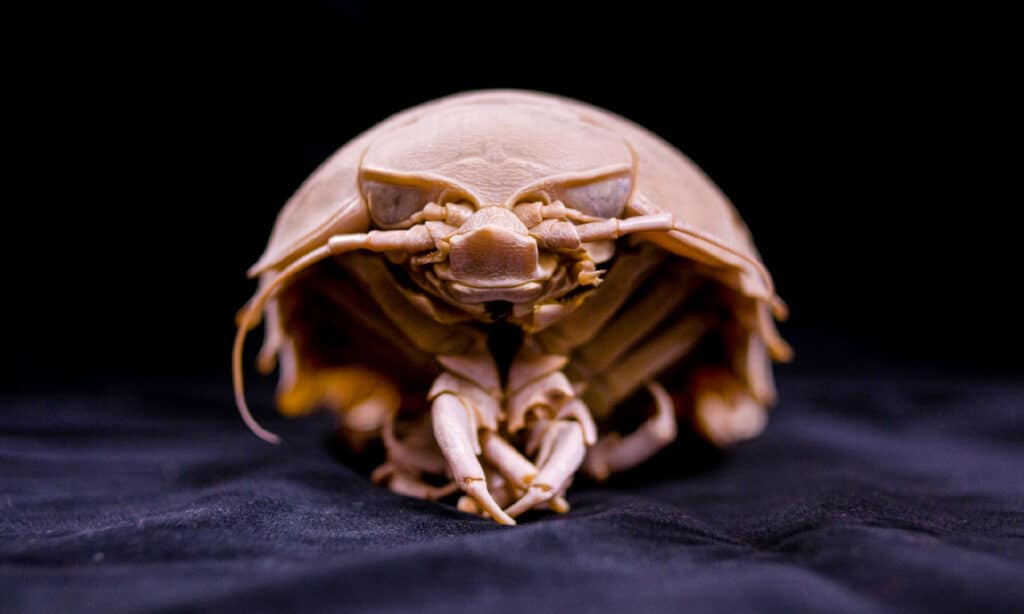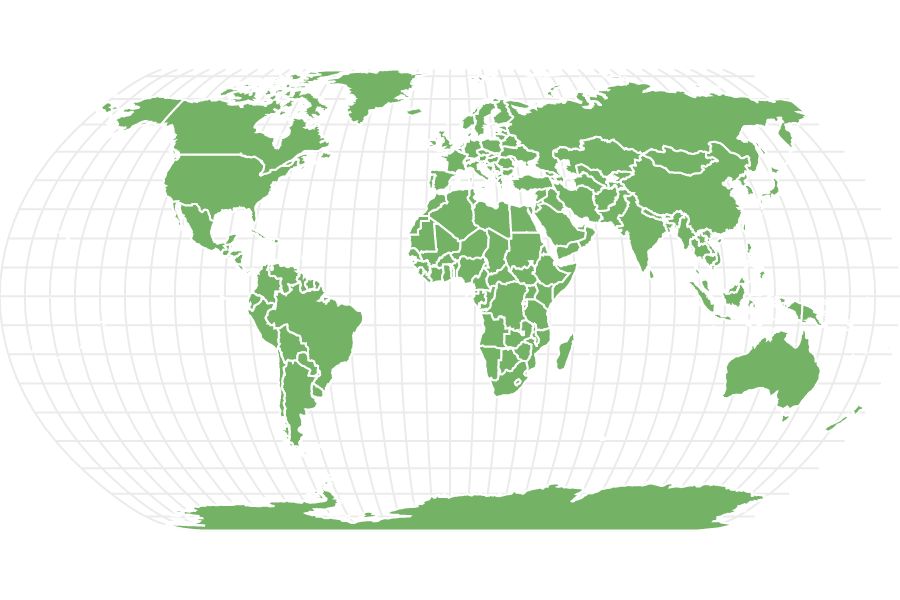Giant Isopod
Giant isopods are the largest group of isopods in the world
Advertisement
Giant Isopod Scientific Classification
Read our Complete Guide to Classification of Animals.
Giant Isopod Conservation Status
Giant Isopod Facts
- Main Prey
- dying or dead fish, crustaceans, whale carcasses, and trawl
- Group Behavior
- Colony
- Fun Fact
- Giant isopods are the largest group of isopods in the world
- Most Distinctive Feature
- Protective shell that is fused to their head
- Habitat
- Deep, cold oceans
- Diet
- Omnivore
- Lifestyle
- Constant hibernation
- Type
- Isopod
- Common Name
- Giant isopod
- Number Of Species
- 20
- Location
- Pacific, Atlantic, and Indian oceans
View all of the Giant Isopod images!
Giant Isopods Summary
The giant isopod is one of the largest isopods in the world, and it can be any one of the 20 species of big isopods. These creatures are in the cold and deep waters in the Pacific, Indian, and Atlantic oceans. Giant isopods are closely related to decapods such as crabs and shrimps, which are found in the Bathynomus genus.
It is the largest crustaceans and members of the isopod family. They are terrestrial crustaceans, much like the pill bugs. The resemblance is uncanny. These isopods are the ocean’s clean-up crew, and their large size is the result of the sea gigantism phenomenon.
3 Facts About Giant Isopods
- Giant isopods do not have a spine, which makes them an invertebrate.
- They are the largest isopod, growing up to 30 inches in size.
- It does not live on land, and instead inhabits three main oceans around the world.
Giant Isopod Species, Types, and Scientific Name
There are 20 different species, all in the Bathynomus genus. All of these isopods have the abyssal deep-sea gigantism gene, a definition from the French zoologist Alphonse Milne-Edwards. Let’s look at the most popular species.
- Bathynomus affinis
- Bathynomus giganteus – The largest of the giant isopods.
- Bathynomus brucei
- Bathynomus bruscai
- Bathynomus crosnieri
Appearance: How To Identify Giant Isopods

Giant Isopods have gills that they use to exchange gasses for breathing.
©iStock.com/LindaZ
Giant isopods are different than your typical isopod because they grow quite large. Their size is the result of abyssal gigantism which makes them grow between 6.7 to 19.7 inches in size for super-giant isopods, and the giant isopods reach 6 inches in size. The Bathynomus giganteus is the largest of the species, reaching nearly 30 inches in size. The morphology resembles the woodlouse and pill bug. They have calcareous exoskeletons made of overlapping segments.
They have large compound eyes that contain 4,000 facets and is separated on their head. The giant isopod has two pairs of antennae, and their first shell segments are fused to the head, which allows them to curl up into a ball that leaves their shell exposed as a form of protection against predators.
It possess seven legs, two of which are used for moving food to their four jaws, and the others for movement in the water. Ranging in color from pink to lilac, they have a set of flat respiratory structures, which act as gills so that they can breathe underwater.
Habitat: Where To Find Giant Isopods
You will find them in the east coast of Australia, Gulf of Mexico, Georgia, Brazil, and the Caribbean in the West Atlantic. Five species of giant isopods are in Australia, the Atlantic, Pacific, and Indian oceans.
Inhabiting deep, cold waters, you can find them as deep as 550 to 7020 feet. They spend their time at the bottom of the ocean floor, made of mud or clay. These marine creatures do not live on land, and they crawl around rocks, substrate, and aquatic vegetation in search of food that they forage for.
Diet: What Do Giant Isopods Eat?
They are foragers, which means they search for their food throughout the day. They are carnivores and scavengers, and their diet consists of live and dead animals such as whale carcasses, crab, fish, squid, sea sponges, and shrimp. Some will also eat trawl catches.
This makes them one of the ocean’s most beneficial cleanup crews, and similar in eating habit to the terrestrial isopods. Some in the southern Gulf of Mexico have large quantities of plastic in their stomach. Likely fell to the bottom of the ocean and eaten by their powerful jaws.
They locate their prey via chemoreception or mechanoreception allowing them to respond to mechanical pressure to sense their food. These creatures hunt in groups which allows them to consume a large amount of food at a time and makes them quick to finish off a large dying or dead whale that has sunk to the bottom of the ocean.
Similar Animals
View all 170 animals that start with GGiant Isopod FAQs (Frequently Asked Questions)
Are giant isopods dangerous?
Giant isopods are not harmful to humans and are not dangerous. Humans will rarely encounter these creatures because they live in deep ocean waters. They are not venomous or poisonous and rely on their shell for protection against predators.
How many legs do giant isopods have?
Giant isopods have seven pairs of thoracic legs, two of which help them move food to their mouths.
How do you identify giant isopods?
Giant isopods resemble an aquatic version of terrestrial isopods like woodlouse or pill bugs, but they are much bigger. Some species grow as large as 6 inches, while others can grow up to 30 inches. They have a shell that is fused to their head for protection, along with 14 legs in total and a pinkish to lilac coloration.
Thank you for reading! Have some feedback for us? Contact the AZ Animals editorial team.
Sources
- Wikipedia , Available here: https://en.wikipedia.org/wiki/Giant_isopod
- Ocean info, Available here: https://oceaninfo.com/animals/giant-isopod/

















